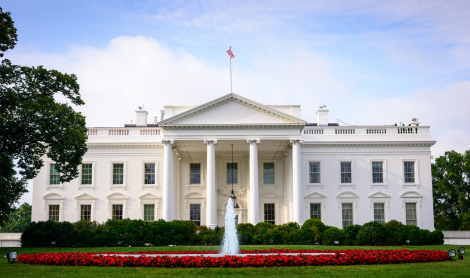In early 2021, NACSA embarked on a new journey to help charter schools, authorizers, and leaders prioritize the aspirations and needs communities have for their kids.
Learn about the origins of this approach, and why it matters, in this interview with NACSA president and CEO, Karega Rausch.
Why #WithCommunities? What sparked the effort to encourage authorizers, charter school leaders, and others to prioritize communities?
Excellent learning opportunities literally change life outcomes for students and communities, especially those long-overlooked, like communities of color, lower-income communities, families of students with disabilities, and others.
Creating those opportunities with communities (vs. doing to communities) can better ensure that schools meet the high aspirations communities have for their children. Over time, this approach will create more excellent schools (new and existing). Untapped talents and expertise in communities– too often missing in educational improvement efforts today – will more effectively guide us all to the kinds of schools needed for student brilliance to be on full display.
It’s also personal for me. My first deep work in educational improvement came during my time with the Equity Project at Indiana University. We worked with school districts in Indiana and across the country that had too many kids of color being inappropriately placed in special education, or too many kids of color and kids with disabilities being suspended or expelled. I also had a personal experience of mentoring a Black middle school student in our church’s youth group that got caught up in a ridiculous “zero tolerance” school discipline situation. Perhaps the most eye-opening experiences were when I witnessed how IEP (Individualized Educational Program) teams, hearing officers, school administrators, and even student advocates had their own agendas and were not listening to the aspirations and needs families had for their own children.
When COVID-19 hit, NACSA called on authorizers to ask communities and schools what they needed, and help to deliver, even if it was outside their comfort zones. When the murders of Black men and women gained national attention shortly thereafter, we again called on authorizers to ask and act, especially acting on the aspirations and needs of Black colleagues. We heard and saw many authorizers moving from somewhat disconnected actors to working with schools and communities to help them realize their aspirations and help meet their needs.
Parents are rightly demanding a reimagining of how education moves forward (check out some of the data from the National Parents Union on this question). Charter schooling and authorizing need to radically imagine how our work can better deliver with communities. That means never compromising our principles: we must hold schools to high standards, say yes to new schools that build on student aspirations and needs, ensure all students have real access to schools of their choice, and balance oversight with autonomy. We must also realize that how those principles get enacted will need to evolve to meet new demands. At the core of this work is a fundamental belief that all communities have assets and inherent value – even those neglected for generations – that must be listened to and prioritized.
What does working #WithCommunities look like? Do you have examples of where you’ve seen this in action?
Working with communities is not just the right thing to do. It also produces better results. I’ve seen it in my time as an authorizer in my home city of Indianapolis.
The first Excel Center opened in Indianapolis in 2010 (and has now replicated to 15 more locations across Indiana and in five other states/locales). The concept came from listening to community concerns that available options for disconnected high school students were focused on GED completion, not a high school diploma. The school was designed by a highly respected community organization – Goodwill Industries – and provided students the opportunity to pursue a more in-depth pathway to receiving a high school diploma and postsecondary credits.
A second example is the Charles A. Tindley Accelerated School, founded in 2004. Its motto was “college or die,” a signal about just how important education was for the life outcomes of its students, and its relentless focus on getting kids into and through selective postsecondary institutions. Importantly, it was the first step of a community-initiated plan to revitalize a neighborhood, which subsequently attracted significant reinvestment in the community.
Working with communities also means holding high, value-based expectations, inclusive of communities that some may overlook. For example, the Indiana charter authorizing team received a charter application from a high-performing operator seeking to expand to our state. While the school indicated it wanted to serve youth in our urban core from diverse sociodemographic backgrounds, the application included virtually no federal or state resources for student meals. When we asked how they intended to serve lower-income students without receiving support for breakfast and lunch, the response was illuminating: “We think parents should provide meals for their kids. It’s vital that they have skin in the game.” Hard no.
It’s been really interesting to see how:
- Places like New Orleans gather authentic community feedback in its authorizing decision-making
- The Massachusetts Department of Elementary and Secondary Education and Albuquerque Public Schools are each making issues of racial equity central in their approach to authorizing
- The New York State Education Department‘s authorizing shop is making changes to its systems to be more responsive to local communities
- National and local community organizations like the National Charter Collaborative and the Mind Trust (based in Indianapolis) are dramatically diversifying the new school leader pipeline
While space precludes mentioning many others by name, it’s exciting to see the innovation taking place in our field.
Why is working with communities hard? What do you think some of the complexities are?
Listening to and acting with communities is hard – really hard – and it can be done poorly. There are real competing tensions and interests and some loud voices purporting to speak for communities (but don’t) that are not easy to resolve. Among those with some power to help deliver outcomes – like authorizers, NACSA, and many others – we must approach this work with a deep sense of humility. Yes, we have important expertise in areas that can benefit communities, but we do not know the exact right answer and need to take our cues from them.
I’ve seen this complexity play out with The Damar Charter Academy (connected to a well-respected local community organization). They proposed a charter school able to serve any student that enrolled, but very clearly with a mission to serve students with disabilities well – and would likely have a school full of only those students. We heard authentic concerns, indicating such a school would harken back to dark days when students with disabilities were separated and institutionalized. Yet the parents of students with disabilities had a very different take, describing the horrors their students experienced at their current schools, the importance of having a school customized to their needs, and the life-changing opportunities this school would provide. Through a lot of work, listening, evaluating plans, and engaging, we made the decision to say yes to the school, choosing to listen and act upon parents’ wishes. Valid competing interests are very real in working with communities.
Perhaps the most complex decision authorizers make, especially when working with communities, is when we have to close a school. Working with communities means we continue to hold schools to high expectations and close them when they don’t deliver on the promises they made to students and communities. It also means we think creatively and evolve.
Here is an example from my lived experience. Closing this particular high school was the right thing to do: many families were well-served and wanted the school to stay open, but far more families we listened to who had already left had not been well-served. We announced the closure a year and half before the charter end date (so we could help parents find a different alternative) yet, in looking back, there is more we could have done. The community would have been better served if we would have more earnestly identified a replacement school operator earlier – like a number of authorizers today are pioneering – that could co-develop a school to more effectively meet parent and student aspirations. I also would have pushed more forcefully for changes to state policy giving students from closed schools preference at another school of their choice (it’s now in state law but was not at the time).
Another crucial reason why this work is complex is the need to navigate among the voices who say they speak for “the community.” Sometimes, these voices indeed have their finger on the pulse of the aspirations of kids and families. But too often they are actually advancing their own self-interests, and we do harm by privileging their voices over others. Parents, students, and other neighborhood residents should speak for themselves, whenever possible. While challenging, it’s important to innovate in creating opportunities for them to be heard. And listening to communities requires us to listen to many people, no matter the educational option they have chosen (district, charter, private school, or homeschooling), nor their standing in the community. Social workers, coaches, youth group leaders, barbers and stylists, neighborhood liaisons, and so many others who engage young people know a lot about student aspirations and needs.
How is NACSA working to center communities? Where do you see NACSA continuing to grow in the work of centering communities?
Last year we held our annual NACSA Leadership Conference with the theme of “Radically Imagine.” We pushed forth our vision of the changing landscape of charter school education and what we all can do with communities.
We are hopeful about what can happen as we listen to, and deliver with, communities. We envision:
- New and innovative ways of arranging learning, built from community aspirations and needs
- A more holistic way of defining school excellence while continuing to expect student literacy and numeracy
- More effective ways of addressing long-standing inequities, especially for students of color, those with disabilities, English language learners, and lower-income students
- An expansion of excellent schools prepared to do well
- New community partnerships and coalitions that do the hard work of continually defining student aspirations and needs, and then finding creative ways of filling gaps
We are moving forward with a deep sense of humility, a lot of listening, and thoughtful partnerships. NACSA certainly does not have this all figured out, and there is not one national way of authentically and deeply engaging local communities. With many others, we will continue to advocate for the timeless charter schooling and authorizing principles of accountability, autonomy, and access, knowing that their application will evolve to meet new demands. We will work with the field to understand, prioritize, and deliver with communities.


